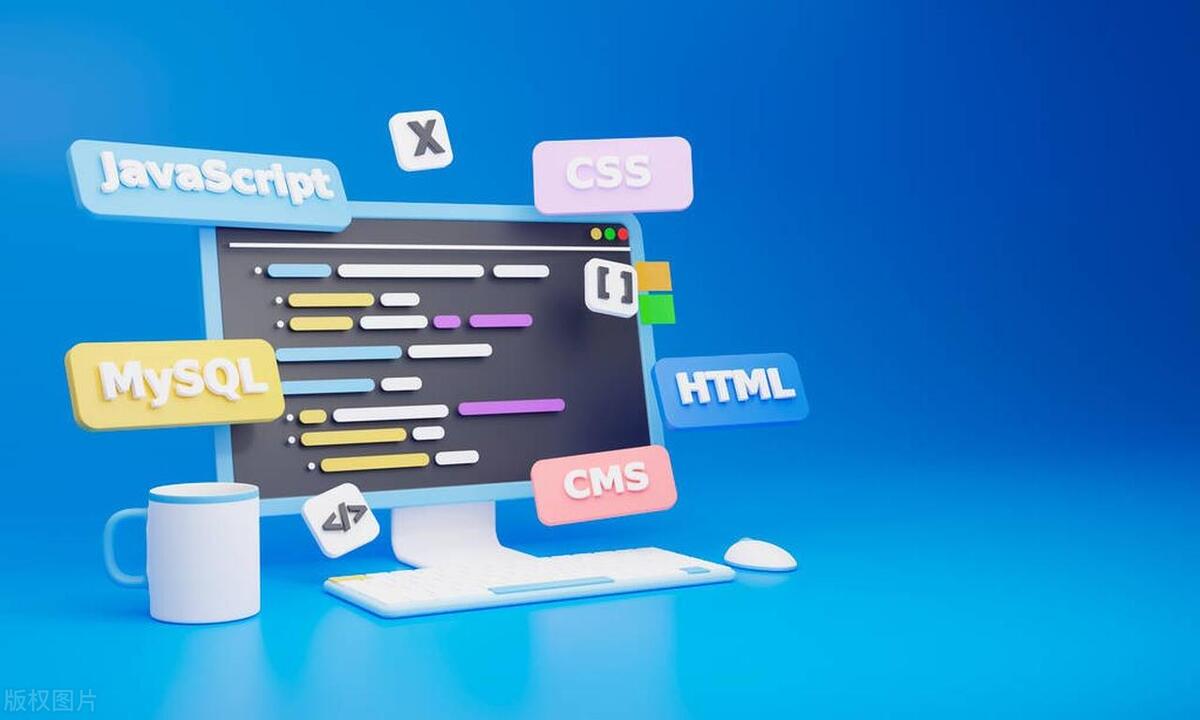Custom Hooks are a way to reuse state logic in React. It starts with use, calls other Hooks and returns data or methods; its core advantages are reuse logic, simplify components, and optimize structure; for example, useWindowSize can encapsulate window listening logic; when creating, naming specifications, calling Hooks at the top level, and returning values ??reasonably; when using it, pay attention to avoiding class components, reducing the number of parameters, and following a single responsibility; compared with higher-level components, Hooks are more intuitive and have no nesting problems; mastering the principles of naming, calling and responsibilities can improve code quality.

In React, a custom Hook is a way to extract component logic into a reusable function. It is essentially a JavaScript function starting with use , which can call other Hooks (such as useState , useEffect , etc.) to encapsulate some common state logic or side effects processing.

Why use a custom Hook?
As React's components become more complex, state logic tends to be scattered in multiple life cycle hooks or recurring between different components. Custom Hooks are used to solve these problems:

- Reuse state logic : instead of copy-paste code.
- Make components simpler : Extract complex logic, and components only focus on the UI layer.
- Better organization of code structures : grouped by function, not by life cycle.
For example: If you have multiple components that need to listen to window size changes, you can put this part of the logic into a useWindowSize custom Hook instead of writing each component once.
How to create a custom hook
The process of creating a custom Hook is actually very simple, you only need to follow a few rules and steps:

Name begins with
use
For example,useInput,useFetch,useLocalStorage, which is a React convention, which can ensure that the ESLint plug-in recognizes and checks whether the use of the Hook is correct.Call other Hooks internally
Custom Hooks must only call other Hooks at the top level and cannot be placed in loops, conditions, or nested functions.Return the data or method you need
You can return status values, update functions, boolean values, objects, etc.
Example: Create a useInput Hook
import { useState } from 'react';
function useInput(initialValue) {
const [value, setValue] = useState(initialValue);
const handleChange = (e) => {
setValue(e.target.value);
};
return {
value,
onChange: handleChange,
};
}Then you can use it in any component like this:
function NameInput() {
const name = useInput('');
Return (
<div>
<input {...name} />
<p>The name you entered is: {name.value}</p>
</div>
);
}Common Notes and Best Practices
Don't use custom Hooks in class components
Because a Hook can only be used in function components or other Hooks.Avoid passing too many parameters to the Hook
If your custom Hook receives many parameters, it may mean that it is too heavy to do so, consider splitting it into multiple smaller Hooks.Reasonably combine built-in Hooks
UseuseEffect,useRef, anduseCallbackto optimize performance or manage side effects.Maintaining a single responsibility principle
A Hook does only one thing, which makes it easier to test and reuse.
The difference between custom Hook and advanced components
Many people used advanced components (HOCs) to reuse logic, but HOCs have several disadvantages:
- It is easy to produce "nested hell"
- Props are easily overwritten or conflicted
- Unintuitive state sharing
By contrast, the Hook is more flat, intuitive, and has direct access to status and side effects without the need for packaging components.
Basically that's it. Custom Hooks are a very practical ability in React development. Although they seem simple, they can greatly improve the maintainability and reusability of the code in actual projects. Just remember a few key points: naming specifications, calling rules, and clear responsibilities, and you can write a useful and stable custom Hook.
The above is the detailed content of What are custom hooks and how do you create one in React?. For more information, please follow other related articles on the PHP Chinese website!

Hot AI Tools

Undress AI Tool
Undress images for free

Undresser.AI Undress
AI-powered app for creating realistic nude photos

AI Clothes Remover
Online AI tool for removing clothes from photos.

Clothoff.io
AI clothes remover

Video Face Swap
Swap faces in any video effortlessly with our completely free AI face swap tool!

Hot Article

Hot Tools

Notepad++7.3.1
Easy-to-use and free code editor

SublimeText3 Chinese version
Chinese version, very easy to use

Zend Studio 13.0.1
Powerful PHP integrated development environment

Dreamweaver CS6
Visual web development tools

SublimeText3 Mac version
God-level code editing software (SublimeText3)

Hot Topics
 How does React handle focus management and accessibility?
Jul 08, 2025 am 02:34 AM
How does React handle focus management and accessibility?
Jul 08, 2025 am 02:34 AM
React itself does not directly manage focus or accessibility, but provides tools to effectively deal with these issues. 1. Use Refs to programmatically manage focus, such as setting element focus through useRef; 2. Use ARIA attributes to improve accessibility, such as defining the structure and state of tab components; 3. Pay attention to keyboard navigation to ensure that the focus logic in components such as modal boxes is clear; 4. Try to use native HTML elements to reduce the workload and error risk of custom implementation; 5. React assists accessibility by controlling the DOM and adding ARIA attributes, but the correct use still depends on developers.
 Describe the difference between shallow and full rendering in React testing.
Jul 06, 2025 am 02:32 AM
Describe the difference between shallow and full rendering in React testing.
Jul 06, 2025 am 02:32 AM
Shallowrenderingtestsacomponentinisolation,withoutchildren,whilefullrenderingincludesallchildcomponents.Shallowrenderingisgoodfortestingacomponent’sownlogicandmarkup,offeringfasterexecutionandisolationfromchildbehavior,butlacksfulllifecycleandDOMinte
 What is the significance of the StrictMode component in React?
Jul 06, 2025 am 02:33 AM
What is the significance of the StrictMode component in React?
Jul 06, 2025 am 02:33 AM
StrictMode does not render any visual content in React, but it is very useful during development. Its main function is to help developers identify potential problems, especially those that may cause bugs or unexpected behavior in complex applications. Specifically, it flags unsafe lifecycle methods, recognizes side effects in render functions, and warns about the use of old string refAPI. In addition, it can expose these side effects by intentionally repeating calls to certain functions, thereby prompting developers to move related operations to appropriate locations, such as the useEffect hook. At the same time, it encourages the use of newer ref methods such as useRef or callback ref instead of string ref. To use Stri effectively
 Vue with TypeScript Integration Guide
Jul 05, 2025 am 02:29 AM
Vue with TypeScript Integration Guide
Jul 05, 2025 am 02:29 AM
Create TypeScript-enabled projects using VueCLI or Vite, which can be quickly initialized through interactive selection features or using templates. Use tags in components to implement type inference with defineComponent, and it is recommended to explicitly declare props and emits types, and use interface or type to define complex structures. It is recommended to explicitly label types when using ref and reactive in setup functions to improve code maintainability and collaboration efficiency.
 How to handle forms in Vue
Jul 04, 2025 am 03:10 AM
How to handle forms in Vue
Jul 04, 2025 am 03:10 AM
There are three key points to be mastered when processing Vue forms: 1. Use v-model to achieve two-way binding and synchronize form data; 2. Implement verification logic to ensure input compliance; 3. Control the submission behavior and process requests and status feedback. In Vue, form elements such as input boxes, check boxes, etc. can be bound to data attributes through v-model, such as automatically synchronizing user input; for multiple selection scenarios of check boxes, the binding field should be initialized into an array to correctly store multiple selected values. Form verification can be implemented through custom functions or third-party libraries. Common practices include checking whether the field is empty, using a regular verification format, and displaying prompt information when errors are wrong; for example, writing a validateForm method to return the error message object of each field. You should use it when submitting
 Server-Side Rendering with Next.js Explained
Jul 23, 2025 am 01:39 AM
Server-Side Rendering with Next.js Explained
Jul 23, 2025 am 01:39 AM
Server-siderendering(SSR)inNext.jsgeneratesHTMLontheserverforeachrequest,improvingperformanceandSEO.1.SSRisidealfordynamiccontentthatchangesfrequently,suchasuserdashboards.2.ItusesgetServerSidePropstofetchdataperrequestandpassittothecomponent.3.UseSS
 A Deep Dive into WebAssembly (WASM) for Front-End Developers
Jul 27, 2025 am 12:32 AM
A Deep Dive into WebAssembly (WASM) for Front-End Developers
Jul 27, 2025 am 12:32 AM
WebAssembly(WASM)isagame-changerforfront-enddevelopersseekinghigh-performancewebapplications.1.WASMisabinaryinstructionformatthatrunsatnear-nativespeed,enablinglanguageslikeRust,C ,andGotoexecuteinthebrowser.2.ItcomplementsJavaScriptratherthanreplac
 What is content security policy CSP
Jul 04, 2025 am 03:21 AM
What is content security policy CSP
Jul 04, 2025 am 03:21 AM
Content Security Policy (CSP) prevents attacks such as XSS by limiting the loading source of web page resources. Its core mechanism is to set a whitelist to prevent unauthorized scripts from being executed. The steps to enable include: 1. Define the policy and clarify the allowed resource sources; 2. Add Content-Security-PolicyHTTP header to the server; 3. Use Report-Only mode to test and debug in the initial stage; 4. Continuous monitoring and optimization strategies to ensure that they do not affect normal functions. Notes include handling inline scripts, careful use of third-party resources, compatibility support, and other irreplaceable security measures.






